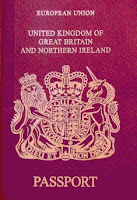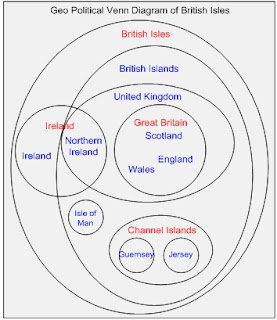The question I pose here is one which I imagine causes confusion in most parts of the world, even in the UK! Question – My passport states that I am British, but what does that actually mean?
 |
| British Passport |
Whenever I go on holiday overseas if someone asks me where I’m from I would reply England as I consider myself as English. However printed on the front of my passport is United Kingdom of Great Britain & Northern Ireland, but inside my nationality is given as British.
How confusing. No more so than if you are from outside the UK. In France they have the Republic of France printed on the front of their passport and their nationality as French – Easy!
On a recent holiday to the USA when asked where do I come from after responding England I was asked “well what language do you speak”.
So there is some confusion, people often confuse England as being Britain, Great Britain or the UK. So let me try and qualify what is being British. Firstly the word British is an adjective, it pertains to the United Kingdom; for example, a citizen of the UK is called a British citizen.
Put simply the United Kingdom (UK) is made up of four countries: England, Scotland, Wales and Northern Ireland. The United Kingdom is a constitutional monarchy and unitary state. A little more information about each of these countries follows:
 |
| British Isles |
England’s dominance and power in Great Britain and the UK stretches back many centuries. As the largest part of the UK, England has roughly 85% of the population of the entire UK. Geographically England covers about 55% of Great Britain. London is England’s capital and the largest city in the UK, it has been centre of government for the United Kingdom since 1707.
Scotland was a separate country from England until 1603, when King James VI of Scotland inherited the English throne. England and Scotland remained separate until the Acts of Union were passed in 1707 thus merging the English and Scottish parliaments into a single United Kingdom parliament. By 1707 England already controlled Wales and Ireland (that is the whole of the island of Ireland).
In 1999 both Scotland and Wales were granted some self governing powers, the Scottish Parliament and the National Assembly of Wales now has some ruling powers.
Northern Ireland was established in 1921 following the partion of Ireland, this was as a consequence of the Irish civil war. It is the only of the four UK countries that is located on a different island. The Republic of Ireland (ROI) came into being in 1949 after an act of the Irish parliament which proclaimed Ireland a republic by discarding the remaining duties of the monarch.
Now – to add further confusion we have the British Isles – these are in fact a large group of islands. The two major islands in this group are Great Britain (consisting of England, Scotland and Wales) which is the largest, and Ireland (consisting of Northern Ireland and the Republic of Ireland) the second largest.
 |
| Venn Diagram |
The British Isles consists of more than 1,000 islands, of which 51 have an area larger than 20 km². The Channel Islands, The Isle of Wight, the Hebrides, and the Isle of Man are some of the more well-known small islands in the British Isles.
Various terms are used to describe the different and overlapping geographical and political areas of the islands of Great Britain, Ireland, and surrounding islands.
The terminology is often a source of confusion, partly owing to the similarity between some of the actual words used, but also because they are often used loosely. I hope you found this short history useful and that this post goes some way towards explaining what is British, and what is not!
Tony Timmins; from (in this order)
Chester
Cheshire
England
Great Britain
United Kingdom
British Isles

